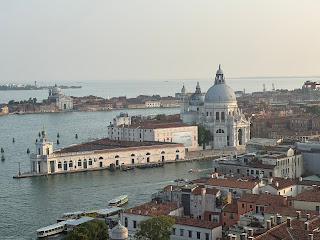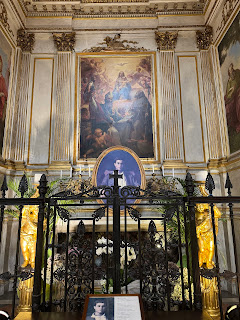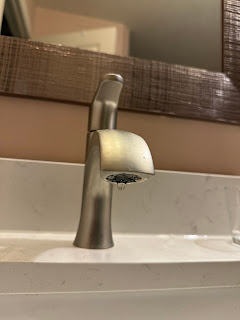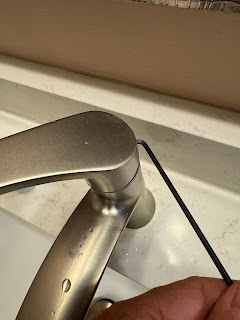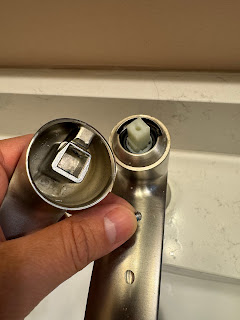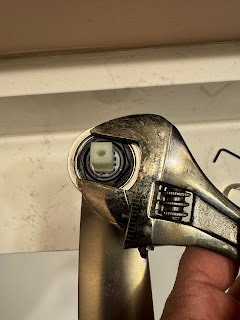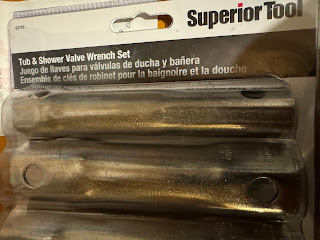On September 2023 my wife and I embarked on one of our best adventures in our life, a pilgrimage on El Camino de Santiago de Compostela. In this guide I will share some tips, recommendations and highlights from our pilgrimage.
Plan your trip
Where to start?
There are many ways (caminos) to get to Santiago. The most popular way is the French, and specifically the last 100km of the way, which is the minimum distance required to earn the Compostela (certificate). If you choose to take this route, most people will start at Sarria, which is actually 115km away from Santiago. This guide assumes that you are starting in Sarria.
How many days do you need?
The next decision is how many days do you want to walk. Most people in healthy age/conditions will choose to complete it in 5 days. If you do the math, that is an average of 23km per day, hence some people will break it in 6 or even 7 days. Because of limited travel days, we had to complete it in 4 days. I strongly do not recommend doing it in less than 5 days, unless you are in a similar situation, in which you essentially combine the last 2 segments which is a whooping 38km in one day.
5 day itinerary
- Day 1: Sarria – Portomarin (22.2 km)
- Day 2: Portomarin – Palas de Rei (24.8 km)
- Day 3: Palas de Rei – Arzua (28.5 km) - the longest segment. If you want to do it in 6 days instead of 5, a good town to add is Melide which is right in between the 2 cities, making each segments under 15km.
- Day 4: Arzua - A Rua (18km) - an alternate town is O Pedrouzo, which is next to A Rua. Some pilgrims may walk all the way to Lavacolla which is past the Santiago airport and less than 10km away from Santiago.
- Day 5: A Rua - Santiago (20k)
What to pack?
I wish this video was available in English because it has very good information and tips. Here is my list:
- Backpack - Decathlon Quechua MH500. Even if you don't intend to carry your bag in your pilgrimage, this is a really great backpack for traveling and carrying all the stuff you'll need in the pilgrimage. 30L is a good size for 5 days, I would not recommend anything smaller than 28L. If you use something larger than 30L be careful with the weight. The recommendation is less than 10% or your weight and no more than 10kg total. This bag already comes with the rain cover, otherwise a bag cover is a must if you will carry it in your walk.
- Small backpack - Salomon Trailblazer 20L. I didn't use this particular one, but if you opt to have your hiking backpack/luggage transported, you will need a small, comfortable and lightweight backpack that you will carry during you pilgrimage with your essentials. This can be anything from 10L to no more than 20L capacity. 20L may seem like a lot, but keep in mind what you want to carry here: light rain jacket, poncho, charging cable, spare battery, headlight, water bottle, emergency kit, etc.
- Waterproof hiking shoes, e.g. Moab Speed Gore-Tex. I really liked these ones. I could have gotten away without gore-tex because it did not rain enough for the shoes to get wet. The most important thing is that you try the shoes on a trail and know that they will be comfortable for very long walks.
- Hiking socks - socks are almost as important as the shoes. You want comfortable socks, they don't have to be water proof, but ones that you have tried and know are comfortable for long walks.
- Light rainproof jacket - it will likely rain one or multiple days.
- Poncho - I brought a cheap one, but it is a must, in addition to your rain jacket.
- Trekking pants - I was not a fan of these pants but ended up using all walking days. You want them to be thin and lightweight. I bought the convertible type, but did not end up using them as shorts, because I quickly learned that the pants help blocking sand/small rocks from getting into your shoes.
- Trekking pole - in our case, we used one each, which I think it is enough, but I strongly suggest using one, it really helps. We actually bought them at one of the souvenir stores at Sarria, they are about 12EUR and lasted the entire pilgrimage.
- Water bottle (~24oz), e.g. hydroflask.
- Hat - this can be a water proof hat or it can be a baseball hat, whatever you find most comfortable for blocking sun and water.
- Technical/Running shirts - use them every day, it will help with sweat and they are also lighter and dry quicker in case you need to wash them during the pilgrimage.
- Clothing for 5 days: pijama, underwear, etc.
- Travel laundry sheets - even if you don't plan to wash your clothes, these can come in handy
- Spare sandals (e.g. Teva) - I almost did not take these, but my wife strongly recommended them. As soon as you get to town, you will want to switch to these so that your feet can take a break from the shoes.
- Sunscreen - small to be able to reapply throughout the day.
- Emergency kit - primarily bandaids in multiple sizes and vaseline for bruises
- Feminine products - if applicable
- Cottonelle wipes - just in case!
- Cash - i.e. Euros and make sure you have small bills (i.e. 5-20)
- Portable USB battery - make sure it is not too heavy but also large enough to give you close to a full recharge in case needed.
- Headlight - just in case you want to leave early while it is still dark, or end up arriving late.
- Phone charger cable
- International data plan - in my case, I had it included with T-Mobile and you can get decent signal throughout most of the way.
- European travel adapter - if applicable
- AirPods - I'm not a fan using AirPods, but it really helped listening to a podcast specially on the harder parts.
When to travel
I heard that statistically in terms of low rain/heat the best time to travel is late May/early June. In my case we traveled mid September and it was very good in terms of weather and not too crowded.
During your pilgrimage
How to get to Santiago
Look for tickets to SCQ. Most European airlines travel there, e.g. Ryan Air, Iberia/Vueling, Air France, Lufthansa, etc. There are multiple daily flights from Madrid so that may be your best choice for connecting. Arrive at least a day earlier from when you are starting el Camino. You will learn that there is no Uber, Cabify or similar ride sharing services in Santiago. There is a bus from the airport to Santiago, otherwise try arranging a taxi with your hotel, as they may be able to get you a cheaper fare.
There are multiple places where you can get your Pilgrim Passport, but if you have time I recommend you get it while at Santiago just in case. You can get this at the
Pilgrim's office, which is behind the Cathedral. The office is open daily from 9am-7pm.
Alternatively if you fly to a nearby city, e.g. Madrid, Porto, Vigo you could take a train to Sarria. Remember that most courier services will transport cabin bags under 15kg.
How to get to Sarria
Apparently there was no direct bus to Sarria from Santiago until recently. The bus departs daily at 11am and gets you to Sarria by 1pm. You can buy these tickets with
Monbus. When you get to the terminal if you see a lot of people waiting for the same bus, do not panic, I learned that they actually send multiple buses based on demand, just make sure you get on the ones that are nonstop to Sarria.
Day 1: Sarria - Portomarin (22km)
Most people will stay the night at Sarria and start their pilgrimage the following day. In our case, because we were time constrained we actually started walking that very same day. If you do that, I recommend eating lunch before leaving Sarria, as we did not find many places to eat that were open (maybe because of the time).
In this segment we noticed an abundance of 2 things: apple trees and oxen ("rubias gallegas" - blonds from Galicia). We were told the apples are for pilgrims and oxen. Because we started late, we encountered very few pilgrims (less than 10). We were able to reach Portomarin before sunset (by 8pm).
 |
| Oxen (Rubias Gallegas) |
Where to stay at Portomarin
We stayed at
Hotel Vistalegre, which is a gem. It is right by the Portomarin city sign and a really nice hotel. Our flight to Santiago was diverted to Bilbao and were sent via bus by Lufthansa (which refused giving us any compensation because the flight made it to Bilbao within less than 3 hours), so we had barely slept the prior day. We slept incredibly well at this hotel. This hotel was not available when I initially booked our travel months ahead, but I assume due to cancellations, a double room was available just 2 weeks before travel. We booked this through Expedia.
 |
| Portomarin city sign |
Day 2: Portomarin - Palas de Rei (25km)
Because we had barely slept the prior day, we decided to sleep in late and departed Portomarin around 10:30am. Make sure to stop by the downtown church (San Nicolas) before leaving. Because we departed late, there were not too many pilgrims but a lot more than the prior day. The hotel receptionist said we should be able to reach Palas de Rei by 5pm, but we were maybe too tired, because we did not reach there until around 6:30pm.
 |
| Palas de Rei - San Nicolas |
We carried our hiking backpack the first 2 days. Because we only had 4 days to complete El Camino we decided we were going to send our backpacks with the local couriers at least for the last day. Because I was able to buy small backpacks in a local store at Palas, we ended up sending it since day 3 and it was one of the best decisions in our trip. It made a huge difference.
Where to stay at Palas de Rei
I booked
Pension San Marcos at Portomarin through booking.com. I also switched to this hotel 1-2 weeks before the trip as it was not available early on. They have both private and shared rooms. The private rooms were really nice, except for a room emergency light that could not be turned off. This hotel is also right on El Camino and next to the local church (San Marcos). Most pilgrim masses are at 7pm.
Day 3: Palas de Rei - Arzua (25km)
We started our walk at a more typical time (8:30am). We definitely saw more pilgrims at this time. We reached our half way point (Melide) right around 1pm. Melide is a good city to sleep in, if you want to add an extra day. We had heard several recommendations about
Pulperia Ezequiel as the best pulperia in Galicia and it did not disappoint! We obviously tried their octopus. Something we did not try here but later try was the zamburiñas (scallops) and they were delicious. Their local white wine was also pretty good and like in most of Spain, very affordable.
 |
| Octopus from Pulperia Ezequiel |
On our walk to Ezequiel we had seen a restaurant named
Alborada that sold homemade ice cream and we stopped there afterwards and it was delicious. Their food also looked really good, so that is another recommendation in case you do not like octopus.
Arzua is one of their largest towns you can stop, so you will likely find more choices to sleep. I noticed there were several whole apartments available when booking travel. We stayed at
Casa Teodora which is pretty good and chose to dine at their restaurant as well.
Day 4: Arzua - O Pedrouzo (19km) & O Pedrouzo - Santiago (19km)
Again, I do not recommend combining these 2 days into one, unless you absolutely have to. Because we had our longest day to go (38km), we left earlier at 7:30am and reached our halfway point (O Pedrouzo) around 1:30pm. We only stopped for lunch there, this is one of the few towns that el Camino does not go through the middle of the city, but only around it.
The last part of El Camino was nearly deserted in the afternoon. We only saw some bicyclers. We reached the outside the city of Santiago around 7pm and made it to the Cathedral before 8pm!
Cathedral of Santiago
What to do once you reach Santiago
By the time we reached the Cathedral we were exhausted so we headed to the hotel afterwards. The next day, we stopped by the pilgrim's office to get our Compostela. The earlier you go there, the less people you will find. It was not too crowded by 10am and we were in and out in about 15 minutes. We then headed to the Cathedral to visit the tomb of Santiago. You enter the tomb from the left side of the Cathedral. It will take about 30 minutes to complete this depending on how busy it is. We then headed to the right side of the Cathedral to attend mass at noon. It was standing room only even though we entered by 11:30am. I recommend attending the pilgrim's mass at 7am or 9am if you want to avoid crowds.
Pilgrim's Mass
Where to stay at Santiago
We stayed at
Hotel Palacio del Carmen. This is now owned by Marriott and we had points. This is a very nice hotel. You should be able to get a decent rate if you book a few months in advanced, but there are many other good options to stay.
Things I wish somebody had told me and general tips
- Not as many water fountains. We were told we would find multiple water fountains where you can refill your bottle. That was not our impression. I would say they were scarce, so I recommend taking a medium size (16-20oz) water bottle. The large water bottles (1.5 liters) are very cheap (1.5EUR in most places), so I recommend stopping by a coffeeshop to buy one and refill your bottles as needed. Also you will notice at blue can drink called Aquarius. This is a sports drink and it comes in multiple flavors. The orange one wasn't as good as the lemon one which tastes like a very refreshing lemonade. Aquarius quickly became a favorite in our stops.
- No public restrooms. There are no public restrooms throughout el camino at all. The restrooms available are from restaurants and coffeeshops. Most restaurants will let you use their restrooms, others may ask for a donations and others are signaled as only for customers. In most cases, we used the restrooms when we had to stop for water or buy a banana/snack.
- Best app - Buen Camino. This app was very useful. It will give you a list of towns in each segment as well as some general tips/warnings (e.g. dangerous crossings). It also gives you the profile, as well as the approximate distance by type of road (trail vs road).
- Trails, trails, trails! I wish somebody had told me that most of El Camino except for the last 10km consists of trails. They are not very technical trails, but some trails are rough with some challenging uphills and downhills. Trails in general are better (softer) for your knees, but they require significant more effort compared to roads. I was not expecting to get this tired from walking 13+ miles on trails, but I was, almost comparable to running a half marathon per day. Not only your feet will hurt, but muscles in my upper legs were very sore. This is why it is important to rest most of the afternoon and do El Camino in at least 5-6 days.
- No Uber or Cabify (popular in Spain) service. You need to request a cab by calling a phone and it seems most taxis will not stop by hailing them. Our ride back to the airport was surprisingly cheap $22EUR, but we were told that is a negotiated rate by the hotel and apparently it is the same rate within the city. I recommend scheduling your taxi through the hotel if that's an option.
- Most pilgrims start and end early. We noticed most pilgrims start their walk between 7-9am. If you prefer walking with the crowds, then start early. If you prefer going solo start late, after 10am. However you will notice several restaurants and coffeeshops close by 5pm, so plan your walk and stops accordingly.
- Don't forget to stamp your passport (2 seal per day required). This is required to get the Compostela, i.e. a certificate proving you completed the minimum distance (100km). It is a pretty cool souvenir with your name and it is written in Latin. Almost every single establishment will have their seal, so no need to stop everywhere, you can stamp wherever you stop for food/drinks.
- El camino is very well signaled. You will notice the iconic signs everywhere there is a fork or turn. These will have the remaining distance to Santiago. Alternatively you may see yellow arrows or printed signs, specially when going through towns. It is rare to not see a sign within 200-300m, so if it you do not see one, double check to make sure that you are still on the right way.
- Book your hotels ahead of time. Unless you are young and do not care where you sleep, you should book hotels ahead of time. The most popular booking site appears to be booking.com. Most hotels do not require pre-payment and can be canceled up to a few days ahead. The only downside of booking ahead, is in case that you have to re-arrange your trip in case of an unexpected delay. Most hotels are cheap, $50-$70 for a double room with private bathroom. You will not be without a bed to sleep, there are many albergues (hostels), however plan to arrive earlier (by 3pm) if you do not have a place booked. If you book a few weeks in advance, you should be able to find hotels alongside El Camino. The last thing you want to do is have to walk a few miles away from El Camino when you are very tired. Some hotels that are not near El Camino may offer ride to and from El Camino.
- Don't carry your backpack! We carried our hiking backpack the first 2 days and it was a nice experience. Some hardcore people may say it does not count if you hike without your backpack, but you will see that the walk is hard on its own, so don't try to be brave unless you are a young soul. The backpack transportation service is extremely reliable and inexpensive. You drop your bag in your hotel, usually before 9am and they will drop it in your next hotel that day by 2pm. You can book your backpack transport with the postal service. It costs 4-5EUR per day, and you can book you 5-day itinerary for 20EUR. We did not book it ahead of time, instead we got an envelope from the hotel and just added 4EUR on the envelope and attached it to the bag. The courier company we used was JacoTrans. These prices are for backpacks or cabin suitcases under 15kg, but I saw some larger suitcases so they may have a different rate for those.
- Speaking Spanish really helps. I noticed some of the locals in the small towns did not speak English. In fact in some cases their primary language was Gallego, but most everybody spoke fluent Spanish.
I hope you enjoyed this guide and if you have any questions do not hesitate to ask in the comments. Buen Camino!






















